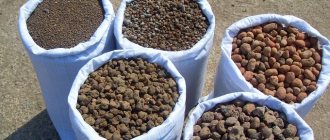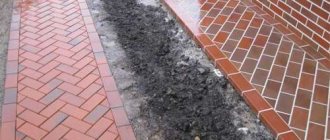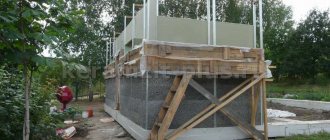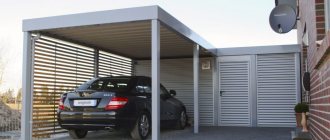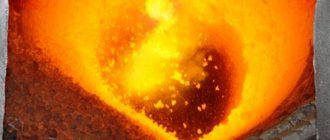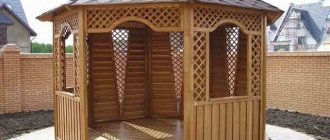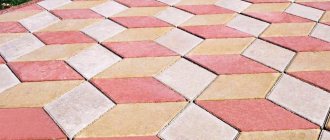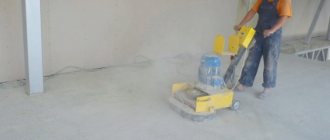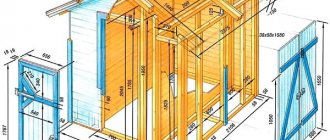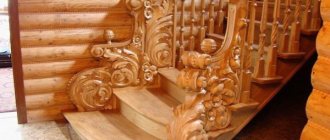Advantages and disadvantages of using expanded clay
Expanded clay is a product of processing clay or shale. The starting material is fired in special furnaces at a very high temperature (+1300°C). The result is round granules, smooth on top and porous inside. It is the internal porosity and external decorative effect that make expanded clay in demand not only in construction, but also in landscape design.
- Material qualities valuable for gardening:
- weak moisture absorption (up to 20%);
- environmental friendliness;
- decorativeness;
- frost resistance;
- durability;
- a light weight;
- low cost.
The insignificant mass of expanded clay granules can also be attributed to the disadvantages of the material. Gusts of strong wind can scatter them across the area. Given this feature, you should not fill areas open to the wind with them.
Varieties of expanded clay
There are several types of expanded clay:
- sand - small round granules less than 5 mm in size;
- gravel - oval granules from 5 mm;
- crushed stone is the same gravel, only cubic in shape.
Expanded clay gravel, in turn, is divided into categories (fractions):
- small - 5–10 mm;
- medium size (most popular) - 10–20 mm;
- large - 20–40 mm.
In gardening, expanded clay sand and medium-sized gravel are often used.
How and with what can you paint expanded clay
The most common colors are terracotta, brown, brown and gray-beige. There are also colored gravels on sale in a variety of shades. If the hardware store doesn’t have the expanded clay of the desired color, you can paint it yourself at home. Most often acrylic paints are used for this purpose. It is important to pay attention to the quality and characteristics of the painting material.
Paint requirements:
- environmentally friendly, does not contain toxins;
- color - bright;
- light fastness - 5–7 points;
- resistance to heavy rainfall, bright sunlight and sudden temperature changes;
- should not impair the moisture and air permeability properties of expanded clay granules.
The painting technology is simple.
- Pour gravel (1/3 of the volume) into a concrete mixer and pour in paint diluted with water (according to the instructions).
- Turn on the unit for 5 minutes. If the granules are colored unevenly, then run the process for another 5 minutes.
- Spread the painted pebbles in a thin layer on a wooden surface or polyethylene to dry.
When the granules are completely dry, they can be safely used for their intended purpose.
What can be used as a dye?
To add color, they usually use acrylic paints and polyacrylate-based dyes or special facade compositions to look like stone, weather-resistant enamels, and even PVA glue.
In order for the decorative stone not to change its color brightness under heavy rain, snow and sunlight, the paint must have the following properties:
- water resistance, weather resistance;
- resistance to mechanical stress, in particular abrasion;
- frost resistance and environmental friendliness.
You can purchase these materials at any hardware store; they are quite affordable.
Ways to use expanded clay in landscape design
In landscape design, expanded clay can perform two functions:
- drainage: for paths and plants;
- decorative: design of flower beds, paths, alpine slides.
By decorating the front garden with multi-colored granules, you can create whole pictures. Expanded clay goes well with marble and granite of different colors.
Garden paths
This landscape design element made from medium-fraction expanded clay gravel looks very nice. But its practicality is low. If you constantly walk along such a path, then in a couple of years the gravel will turn into sand.
Options for using expanded clay:
- a layer of gravel between the concrete path and the curb will ensure dryness even in rainy weather;
- filling the space between tiles or paving stones with expanded clay sand or fine gravel (nice and dry);
- Fill the path with expanded clay concrete - a mixture of expanded clay and cement mortar.
Production of expanded clay concrete:
- Pour expanded clay (8 parts) into a concrete mixer and pour water (1.5 parts). Wait until the liquid is absorbed.
- Fill in M400 cement (1 part) and sand (2 parts).
- Knead for about 10 minutes.
Expanded clay - features of application on the site
Adding an article to a new collection
This material is well known to builders. But the construction of buildings is not the only area of application for expanded clay. Expanded clay gravel is widely used in gardening and landscape design.
You probably know what expanded clay looks like. This material is light particles with a melted surface and pores inside. Expanded clay is produced by firing clay or shale in special furnaces at temperatures from 1050 to 1300°C.
The color of expanded clay can be beige-gray, gray-brown, dark brown, terracotta
There are several types of expanded clay :
- expanded clay gravel - characterized by an oval shape, while the size of the granules can be different: 5-10 mm, 10-20 mm and 20-40 mm;
- expanded clay crushed stone differs from gravel only in that its granules are cubic in shape with sharp edges and corners;
- Expanded clay sand is the same gravel, the granule size of which is less than 5 mm.
Expanded clay gravel with granules ranging in size from 10 to 20 mm is most often used in gardens and vegetable gardens.
Do-it-yourself crushed stone painting technology
Currently, three types of crushed stone are most accessible to residents of our country - granite, marble and lime. Moreover, depending on the geological features of different regions, the cost of extracted and imported species may differ slightly. Lime crushed stone is distinguished by enhanced coating, which complicates its painting and reduces the quality of the finished product. Granite and marble crushed stone of small fractions are most widely used for painting.
As a rule, cube-shaped crushed stone with an element size of no more than 10-15 millimeters is optimal for painting.
If it is not possible to purchase a homogeneous material, there will be a need to calibrate it using special devices or improvised means.
To carry out painting work on crushed stone you will need:
1. a place for unloading raw materials, drying and storing finished products; The optimal option is to have an electrified plot of land with an area of 1-2 acres and a simple canopy located on it.
2. electric concrete mixer, purchased or homemade;
3. dye in a ratio of 20 kg. for every ton of crushed stone;
4. a screen for separating crushed stone into fractions or a steel mesh with cells of a suitable size in a wooden frame;
5. water container with a volume of 100-200 liters;
6. several plastic cellular boxes for washing raw materials and unloading freshly painted crushed stone.
In the case where the result of the work is necessary for you personally, organizing production will not require large expenditures of money and effort. Having prepared everything necessary and purchased a machine of granite crushed stone, we begin to paint it. To do this, using an industrial screen or mesh device, we separate the stones of the required size, wash the granite in portions, lowering a bucket of raw materials in a plastic box into the water and making several reciprocating movements. Then we pour crushed stone onto a flat base - sheets of old linoleum, metal, wooden flooring, etc. Drying time depends on the time of year and layer thickness. After 0.5 - 1 hour, pour a couple of buckets of crushed stone into the concrete mixer, turn it on and add dye in portions.
As the latter, the most affordable paint is water-based or acrylic. Fill it in small portions of about 0.5 kg. per load depending on the desired brightness and color intensity. Coloring occurs within 40-60 minutes with stirring. Next is the removal of the raw materials into a wooden box with a mesh bottom, located above a container to collect excess dye that flows down. Then the distribution of freshly painted crushed stone under a drying shed and storage of the finished material.
More difficult from a technological point of view is painting preheated crushed stone with nitro paints. This technology requires a gas cylinder and a burner. At the same time, the coloring quality is high, the resulting colored crushed stone does not fade for a long time.
If you are organizing a business for the production and sale of painted crushed stone, you should first work out the technology of the production process on a small batch. Having received material of sufficiently high quality, we begin to search for future consumers. Finished products can be sold in large quantities or at retail through construction stores or bases. The main thing is to study the demand for this type of product for a specific region and the absence of competition. For packaging small batches, it is convenient to use plastic or paper bags of sufficient strength.
Dear readers, if you have any questions, please ask them using the form below. We will be glad to communicate with you;)
Properties and advantages of expanded clay
This material has deservedly gained wide popularity not only among builders, but also farmers and landscape designers. What are the main advantages of expanded clay?
- High strength. Expanded clay is durable, so it can be used repeatedly.
- Good sound and heat insulation.
- A light weight.
- High frost resistance (25 cycles or more) and fire resistance .
- Chemical inertness and acid resistance . Expanded clay is resistant to chemically aggressive environments.
- Low water absorption (no more than 20%). Expanded clay prevents moisture from evaporating and thereby controls the water balance of the plant.
- Environmental friendliness of the material. Expanded clay does not contain harmful additives, so it is safe for health.
- Presentable appearance. Small pebbles of expanded clay fit perfectly into the design of any flower garden. They look natural, are barely noticeable and do not overshadow the decorative plants.
- The optimum ratio of price and quality . The material is already inexpensive, but if you don’t throw it away after the first use and reuse it, then it will cost mere pennies.
The process of creating painted crushed stone
There is only one way to paint crushed stone, and it is almost automatic, since your participation in the main process will be minimal. The most effective and time-consuming technology involves the use of a concrete mixer. After you have properly prepared all the components, you can proceed to the painting itself, which consists of several stages:
- Crushed stone should be placed in the concrete mixer to two-thirds the volume of the machine (if the capacity is 0.7 cubic meters).
- Pour in paint in a ratio of 30 percent to 70 percent stone.
- Start the mechanism and wait 40-60 minutes until the stone is completely covered with a colored layer.
- At the end of the “kneading”, drying follows - lay everything out on the mesh, placing a tray underneath, where the remaining paint will run off.
It is not advisable to store dried, painted crushed stone outdoors; it is better to use closed containers.
For protection from external influences it is possible to use. This will give the material an additional decorative effect.
Using expanded clay in the country
Thanks to these properties, expanded clay is used as insulation in the construction of garden buildings (for floors, walls, roofs, basements) and as a mortar filler for foundations. And also during the construction of garden paths. This is especially true in areas located in wetlands.
A special pillow is made from expanded clay, which forms a dense layer and withstands strong pressure
But most often expanded clay is used in the garden, vegetable garden and landscape design. It serves as insulation and drainage for the roots.
Expanded clay gravel provides plants with comfortable growing conditions: it improves the structure of the soil, making it air- and water-permeable, protects plant roots from drying out in hot weather and mold from forming in rainy weather, reduces the risk of plant diseases, as well as the appearance of various pests.
Mulching with expanded clay increases the productivity of fruit, berry and vegetable crops
Expanded clay can also be used when growing various crops in hydroponics.
two ways to increase soil fertility using expanded clay :
- When planting trees and shrubs, dig a hole, pour expanded clay gravel into the bottom, and on top of it - a small layer of soil on which to place the seedling. You need to sprinkle the seedling with a little earth on top, and fill the remaining space of the hole with expanded clay. This method is called layer-by-layer.
- Simply mix small (about 5 mm) expanded clay with soil and plant the plant in the resulting mixture.
Fine-grained expanded clay can also be used in the garden for mulching . This will help protect the soil surface from mold, as well as reduce the number of waterings and retain moisture in the soil for a long time.
In gardening, expanded clay is widely used for drainage under apple trees, pears, currants, grapes, etc.
How to make decorative crushed stone
The process of creating decorative crushed stone is practically no different from the process of producing its counterpart - construction crushed stone, except that after the main operations, the first one is painted.
Thus, in order for the crushed stone to acquire long-lasting color, modern equipment is used.
Before you start painting the material, it is divided into fractions in special devices, from which the appropriate sizes of 4.3-6.4 mm are selected. However, one should not think that this variety is necessarily subject to coloring, since white crushed stone is nothing more than marble chips of a natural color.
The process of creating decorative colored crushed stone includes a number of stages:
1. Initially, the crushed stone itself is purchased.
2. Fine particles and debris are then sorted out to ensure that only suitable and selected material remains. For this purpose, a special device called a “rumble” is used. With its help, crushed stone is sifted automatically, which is pre-loaded there with a shovel.
3. If such equipment is not available to you, you can use a large mesh with small holes. It must be stretched and placed at an angle, after which you need to pour building material there and begin to carefully sift through it. When using this technology, all operations are carried out manually.
4. The next stage involves painting. For this, it is recommended to use crushed stone with a fraction of 10 mm or more. Thus, the previously sifted material is placed in a special device, which can be used as a conventional concrete mixer.
We invite you to familiarize yourself with the Sign of the waning moon
5. Then the color is poured into the equipment. To paint the stone, it is advisable to use acrylic paint with a volume of at least 20-30% of the volume of crushed stone.
7. Upon completion of the work, the crushed stone is moved to the receiving hopper, which is a box with a mesh. The latter should be pulled a few centimeters higher from the bottom of the metal device. The cells in the grid must correspond to 10 mm. Such equipment will reduce paint consumption, since excess acrylic will flow through it to the bottom of the box, from where it can then be reused.
8. The finished product must be thoroughly dried and left in the open air.
Expanded clay in landscape design
Expanded clay not only brings great benefits to plants, but also performs a decorative function in the flower garden. Using this material, you can fill the resulting space in rock gardens and rockeries, and also, by filling in the holes, level the surface.
If traditional brown material seems boring, use decorative expanded clay painted in various colors
Now you know how to inexpensively increase soil fertility, relieve plants from stagnant water and poor air circulation, and create an attractive flower bed. Have a rich harvest and beautiful ornamental plants!
